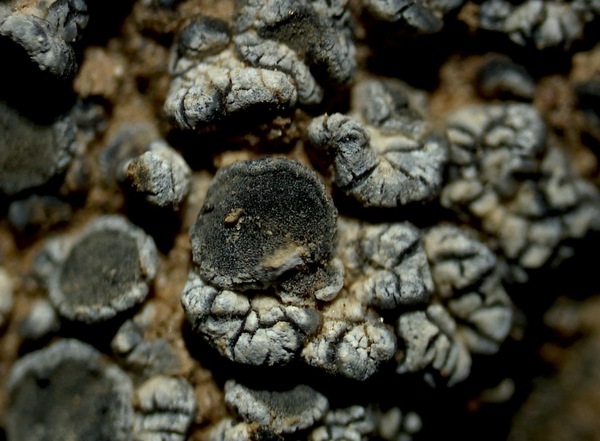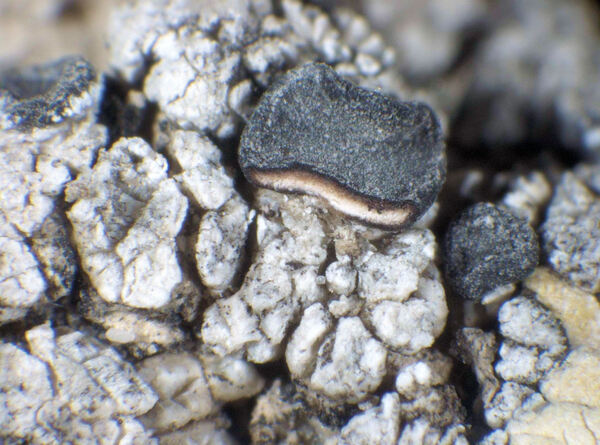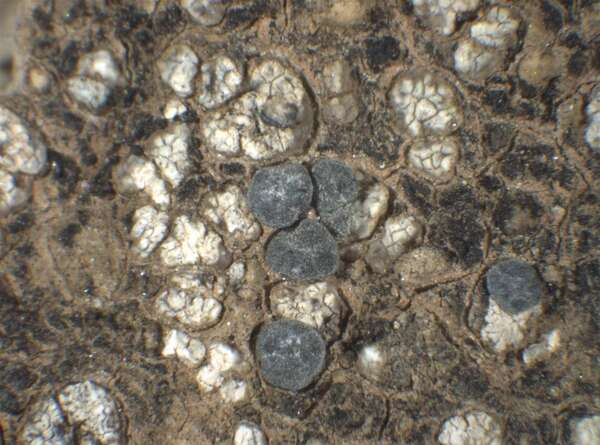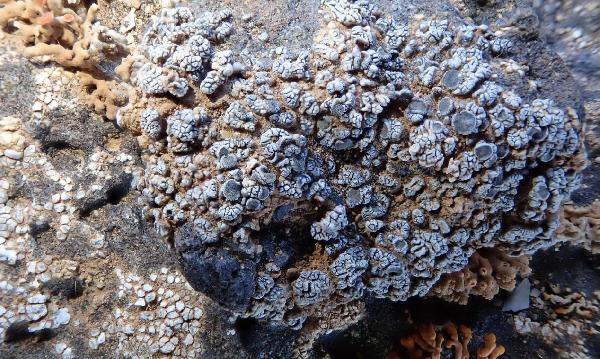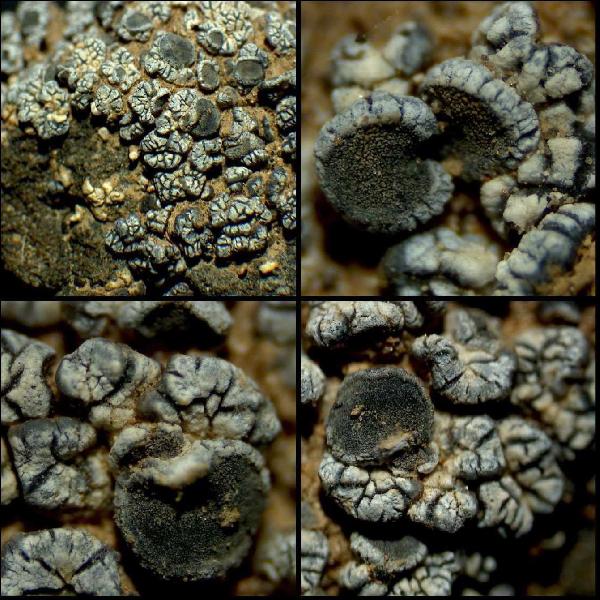Bibbya lutosa (Ach.) Kistenich, Timdal, Bendiksby & S.Ekman
Taxon, 67: 891, 2018.. Basionym: Lecidea lutosa Ach. - Lichenogr. Univ.: 182, 1810.
Synonyms: Biatorina verrucosa (A. Massal.) Jatta; Thalloidima verrucosum A. Massal.; Toninia lutosa (Ach.) Timdal; Toninia verrucosa (A. Massal.) Flagey; Toninia violacea B. de Lesd.
Distribution: N - Ven (Lazzarin 2000b), TAA (Nascimbene 2005), Lomb. C - Mol (Nimis & Tretiach 1999, Caporale & al. 2008). C - Camp (Aprile & al. 2003b).
Description: Thallus squamulose, pale grey, dull, densely covered with a granulose, white pruina. Squamules (2-)3-6 mm wide, mostly flattened, with deep fissures in the cortex and often with a central depression; lower surface pale brown to white. Upper cortex 50-220 µm thick, including an up to 200 µm thick epinecral layer, with crystals of calcium oxalates; algal layer continuous; medulla white, usually with crystals of calcium oxalates. Apothecia lecideine, sessile, strongly constricted at base, 1-3 mm across, with a black, rarely faintly pruinose, flat, smooth disc and a distinct, smooth, concolorous proper margin. Proper exciple dark reddish brown in outer part, paler within, K+ red, N-; epithecium dark reddish brown, K+ red, N-; hymenium colourless, 60-70 µm high; paraphyses not coherent, distinctly thickened above; hypothecium pale brown to colourless. Asci 8-spored, clavate, the apical dome K/I+ dark blue with a pale, conical-pointed apical cushion (axial mass), the wall I-, but the thin outer gel I+ blue, Bacidia-type. Ascospores (1-)3-septate, hyaline, ellipsoid-cylindrical to bacilliform, 12-20 x 3-4.5 µm. Pycnidia dark, immersed. Conidia filiform. Photobiont chlorococcoid. Spot tests: thallus K-, C-, KC-, P-, UV-. Chemistry: thallus without lichen substances.Note: a probably incompletely holarctic species of continental areas, found on soil and weathered calciferous rocks, often in association with cyanobacteria or cyanobacterial lichens when young, mostly at relatively low elevations. An earlier record from Venezia Giulia (see Nimis 1993: 702) being actually from Slovenia, is not accepted here.
Growth form: Squamulose
Substrata: rocks, soil, terricolous mosses, and plant debris
Photobiont: green algae other than Trentepohlia
Reproductive strategy: mainly sexual
Subcontinental: restricted to areas with a dry-subcontinental climate (e.g. dry Alpine valleys, parts of Mediterranean Italy)
Commonnes-rarity: (info)
Alpine belt: absent
Subalpine belt: absent
Oromediterranean belt: absent
Montane belt: absent
Submediterranean belt: extremely rare
Padanian area: absent
Humid submediterranean belt: absent
Humid mediterranean belt: absent
Dry mediterranean belt: absent
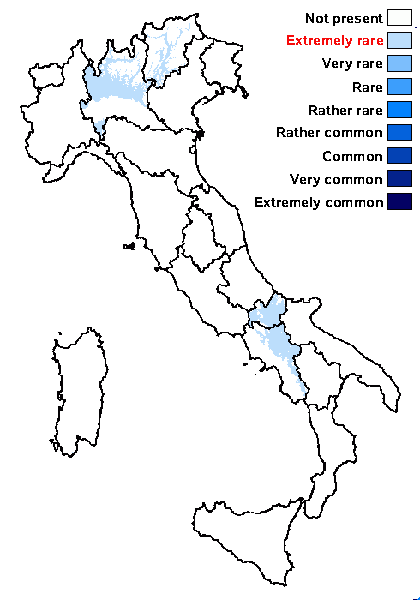
Predictive model
Herbarium samples
Growth form: Squamulose
Substrata: rocks, soil, terricolous mosses, and plant debris
Photobiont: green algae other than Trentepohlia
Reproductive strategy: mainly sexual
Subcontinental: restricted to areas with a dry-subcontinental climate (e.g. dry Alpine valleys, parts of Mediterranean Italy)
Commonnes-rarity: (info)
Alpine belt: absent
Subalpine belt: absent
Oromediterranean belt: absent
Montane belt: absent
Submediterranean belt: extremely rare
Padanian area: absent
Humid submediterranean belt: absent
Humid mediterranean belt: absent
Dry mediterranean belt: absent

Predictive model
| Herbarium samples |
 Index Fungorum
Index Fungorum
 GBIF
GBIF
